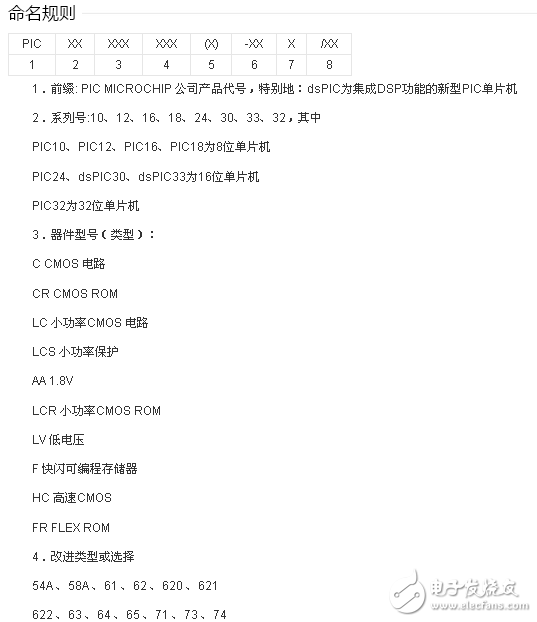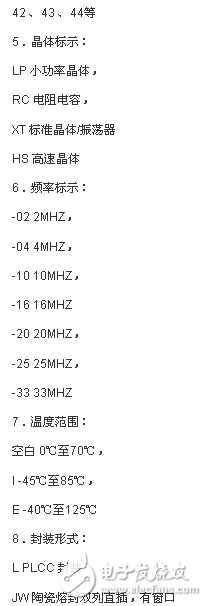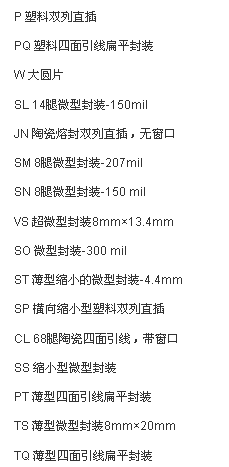The pic microcontroller is equivalent to a small computer. The Peripheral Interface Controller is an integrated circuit (IC) used to develop and control peripheral devices. A CPU with decentralized (multitasking) capabilities. Compared with humans, the brain is the CPU, and the part shared by pic is equivalent to the human nervous system. The pic microcontroller has a calculation function and a memory like a CPU and is controlled by software. However, processing power is generally limited, and memory capacity is limited, depending on the type of pic. However, their maximum operating frequency is about 20MHz, and the memory capacity is about 1K-4K bytes for writing programs.
It is possible to make the circuit very small with a pic microcontroller. And because the pic microcontroller can do the calculation part, memory, input and output all in one chip. Therefore, she works very efficiently, her functions are freely defined, and she can flexibly adapt to different control requirements without having to replace different ICs. This way it is possible for the circuit to be small.
Today's microcontroller manufacturers are dazzling, product performance is different. Which model should we choose for specific situations? First of all, we have to figure out the difference between the various models, we can understand a lot from the naming rules of pic microcontroller.
Need to understand the naming rules before pic microcontroller selection



The selection of single-chip microcomputer is an important and troublesome thing. If the selection is right, the products will be cost-effective and stable, and vice versa, the product cost will be too high or the product will run normally. Pre-design requirements may not be met at all. In general, the general selection principle is:
Pic microcontroller selection skills
(1) "The chip contains (function or quantity) is slightly larger than the design requirements", "the design requirements are as much as possible (using the chip to complete (less use of peripheral devices)"; (2) "Select large (large factory) is not selected small, choose More (more supply) do not choose less, choose the name (brand name) do not choose 渺 (the ethereal, I do not know the details of the factory), choose cheap (cheap) but better (quality assurance). Specifically, it should be considered from the aspects of technicality, practicability and openness of single-chip application:
1, memory
The capacity of the single-chip FLASH is determined according to the size of the program, and the FLASH capacity must be greater than the code amount. For example, if your code size is about 50 KB, then it is recommended that you choose a microcontroller with a FLASH capacity of 64 KB or 128 KB.
2, speed
The running speed of the single chip first depends on the clock frequency. In general, for a single-chip microcomputer of the same structure, the higher the clock frequency, the faster the speed. If your design requires a high speed, choose a microcontroller that runs faster. For example, in general, motor control applications mostly use a sampling rate of 100ksps or higher, so when the microcontroller is used for motor control, the clock frequency is high enough. In short, when selecting a single-chip microcomputer, the clock frequency should be selected according to the needs of the product. Do not pursue high speed on one side, and the higher the clock frequency, the greater the power consumption. In addition, the stability, anti-interference and other parameters of the microcontroller are basically inversely proportional to the operating speed of the microcontroller. Therefore, try to find a microcontroller that can run at a very high clock frequency without low power consumption.
3, peripheral requirements
If your design requires peripherals such as ADC, SPI, GPIO, USB, etc., then you need to find a microcontroller that integrates all of these peripherals. Because using a microcontroller with the above peripherals is obviously more economical than using a normal microcontroller and peripherals with a separate ADC. In addition, the integration of peripherals into the microcontroller also means lower power consumption, because there is no peripheral circuit that can generate power, and there is no copper that can be used to connect peripheral circuits to generate power. Only the microcontroller itself generates power.
4, convenient development tools
This is a very important aspect because development tools can greatly affect the power consumption of the products you design. Many companies have developed compilers with code optimization capabilities, so when you compile the code, the compiler will tell you the specific compilation information, you can optimize the code according to the compilation information to reduce power consumption. For example, if your design requires peripherals such as ADC, UART, and GPIO, you need to initialize these devices, but the UART is conditional in the design (only for debugging results), at this time the compiler You will be prompted to disable this peripheral to reduce power consumption. It must be said that this intelligent development tool is a boon for developers.
5. Future needs and compatibility
Designers need to consider issues such as the possibility that the product may need to be upgraded in the future when designing the product. For example, if you need to add some features to your design, you may need to increase memory, peripherals, etc., and you may need to increase the speed of the microcontroller. Therefore, in the selection of the microcontroller, it is necessary to find a balance between the current design requirements and the future design to meet different levels of requirements.
6, the cost
A good design must not only be functional, but also meet the cost requirements. If you can't control the cost, the best design is also awkward. Therefore, it is necessary to reduce the cost of the microcontroller or even the entire product as much as possible.
7, working voltage (VCC)
The operating voltage of a microcontroller is the voltage that can be supplied to make it work properly. The higher the operating voltage, the greater the power consumption of the microcontroller. Therefore, in order to reduce the power consumption of the product, it is necessary to reduce the operating voltage as much as possible.
In addition, I would also like to suggest that designers choose the right chip architecture based on specific product needs. If it's just a simple control application (such as lighting systems, electronic toys, etc.), then you don't need a chip with a complex architecture like ARM. In addition, for low-power designs, the microcontroller must have a sleep mode, and the use of sleep mode/low-power mode based on interrupt operation is a standard industry practice for reducing power consumption.
Finally, there is a common saying: Don't stick to the chip and whether the chip is advanced. The MCU is just a tool. The real skill lies in your professional knowledge. You should use the most suitable chip to make the most suitable product.
PIC microcontroller selection table and peripheral product selection guide information free download : http://
Nickel Alkaline Battery,Solar Energy Battery,48V Nife Battery 200Ah ,Ni-Fe Battery 100~200Ah
Henan Xintaihang Power Source Co.,Ltd , https://www.taihangbattery.com
